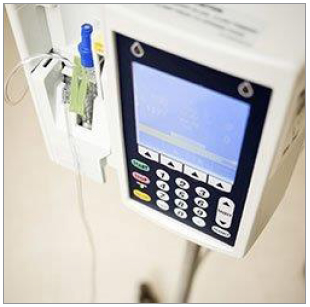Infusion Pumps- The Essentials
Infusion pumps are used to push fluids, medications, and/or nutrients into a patient for therapeutic purposes.
Sun May 31 2015
Infusion Pumps- The Essentials
Infusion pumps are used to push fluids, medications, and/or nutrients into a patient for therapeutic purposes. At their simplest, infusion pumps consist of a user interface that controls an electromechanical pumping mechanism responsible for pushing fluid from the fluid container (e.g., bag, syringe, bottle) through a length of flexible tubing called an administration set (which is often proprietary) into a patient’s catheter. They are most commonly used for IV administrations, although subcutaneous, arterial, intrathecal, and epidural infusions are frequently employed.
Infusion pumps are used in hospitals, in alternative care settings (e.g., physicians’ offices, outpatient infusion centers), and, occasionally, in emergency medical service vehicles. In general, infusion pumps are used when the solution to be administered must be delivered with greater accuracy or speed than can be provided through a manually adjusted gravity administration set. Because of their accuracy, infusion pumps have proven to be useful in applications such as continuous epidural anesthesia, administration of IV cardiovascular drugs, chemotherapy, and pediatric applications, as well as for home IV therapy.
The basic mechanical performance of all of these devices has changed very little in recent years. However, that doesn’t mean the technology itself hasn’t evolved, and advances in computing power and an increasing awareness of medication safety have resulted in significant changes in the way infusion pumps are purchased, implemented, and used.
So when it comes to selection and purchasing, hospitals are concentrating on a host of other issues rather than focusing strongly on mechanical performance. For example: How easy is the pump to use? How well does the system’s dose error reduction system (DERS) function? How extensive and configurable is the pump’s drug library? How well does the pump communicate with the pump server—and how easy is it to integrate the pump with other hospital systems, either now or in the future? What kind of tools are provided to help analyze log data?
Click here to view the entire article on TechNation!

